(Well, hibernation is over and my edited book, ‘Made in Swindon: a social history 1840s-1940s will be published in April’ - about which more later.)
The is the time of carnivals in the christian world. While public celebrations/rituals of course predate christianity, carnivals became an excuse for a big party before the onset of fasting and self-denial during lent. Dramas, dances and public singing, fireworks and processions all figured in Italy during the renaissance in the arts. Needless to say, the artists of the time got involved.
There was also a tradition among ruling elites in the Renaissance period (the nobility, princes, dukes, bishops and popes) to show off their wealth and status through parades, theatrical events and magnificently resourced feasts and festivals. Renaissance artists took up the challenge of organising some of these, inevitably because it paid well but also because it gained credit with the well heeled patron for future work. (For example, some painters who also excelled in design like Leonardo were commissioned to make improvements to defensive fortifications and other buildings.)
The transition to the modern carnival - with its masked balls, licentious behaviour and indiscretions - is commonly associated with Venice and there is more detail about this here: https://en.wikipedia.org/wiki/Carnival_of_Venice
The second biggest carnival today is in the seaside town of Via Reggio near Pisa and has morphed into something quite different. Yes, it is loud and colourful and there is a vibrancy and a sense of risk in the air. However, the Via Reggio carnival is less about the pleasures of the wealthy individual in medieval times and more about community engagement in the twenty-first century. Like all Italian towns, contrada or parishes are the basis for intense rivalry about who puts on the best show. Competition or palio between different parts of the same city is best known outside of Italy by the horse race in Siena. It is quite a change from the elites who once lavished resources to entertain themselves and brings its own cheerful and more social dynamic.
The scale of the giant floats in Via Reggio are populated with (often moving) papier-mache figures and their size is evident in the photos that follow. They rise above the second floor of some of the surrounding buildings, parading through the town with each preceded by scores of their own dancers and singers. There are lots of pictures, but enjoy - and look out for assorted baddies Hitler, Trump and Kim Jong Un to name but a few - as well as some greats such as as Frida Kahlo





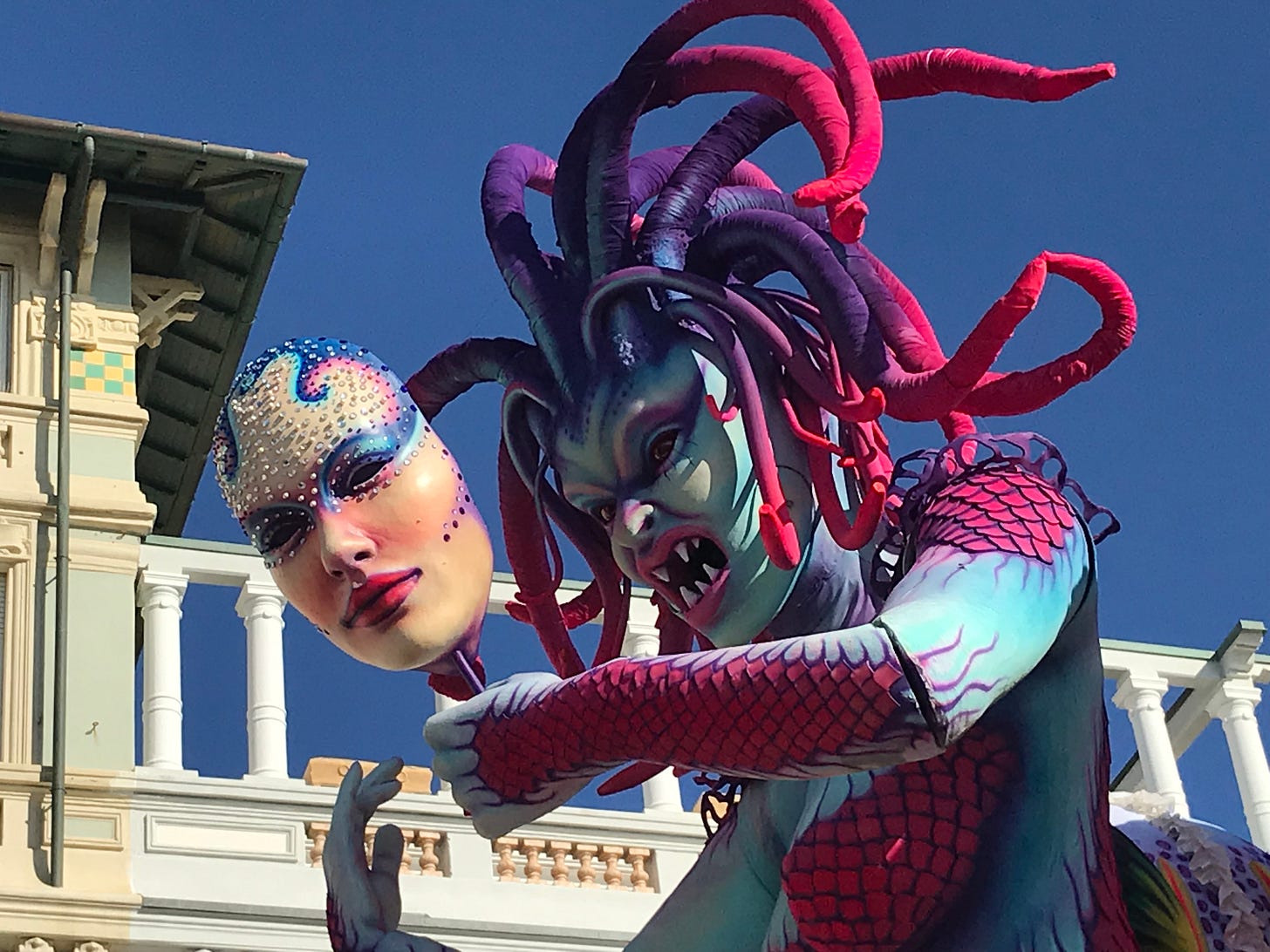


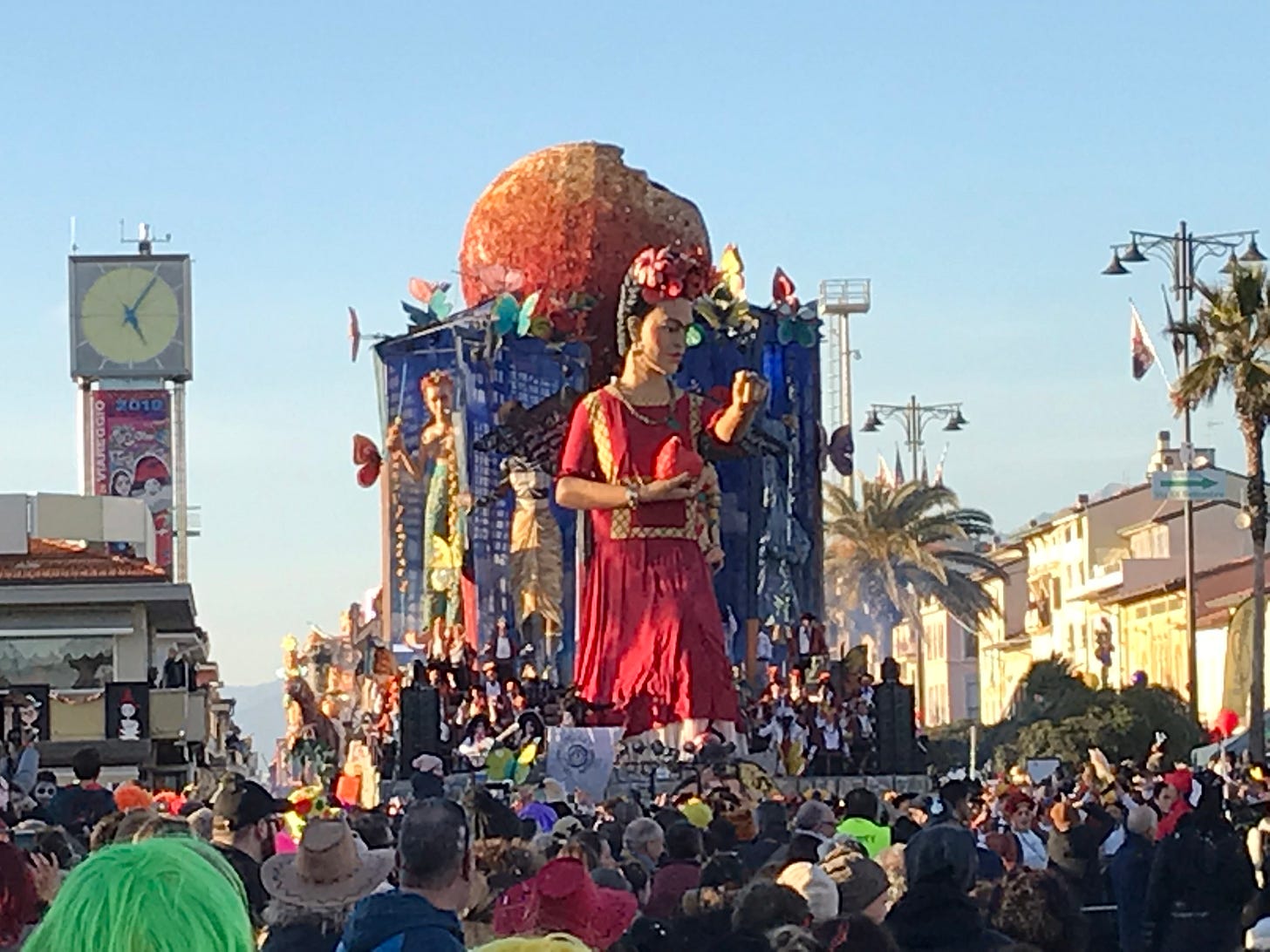
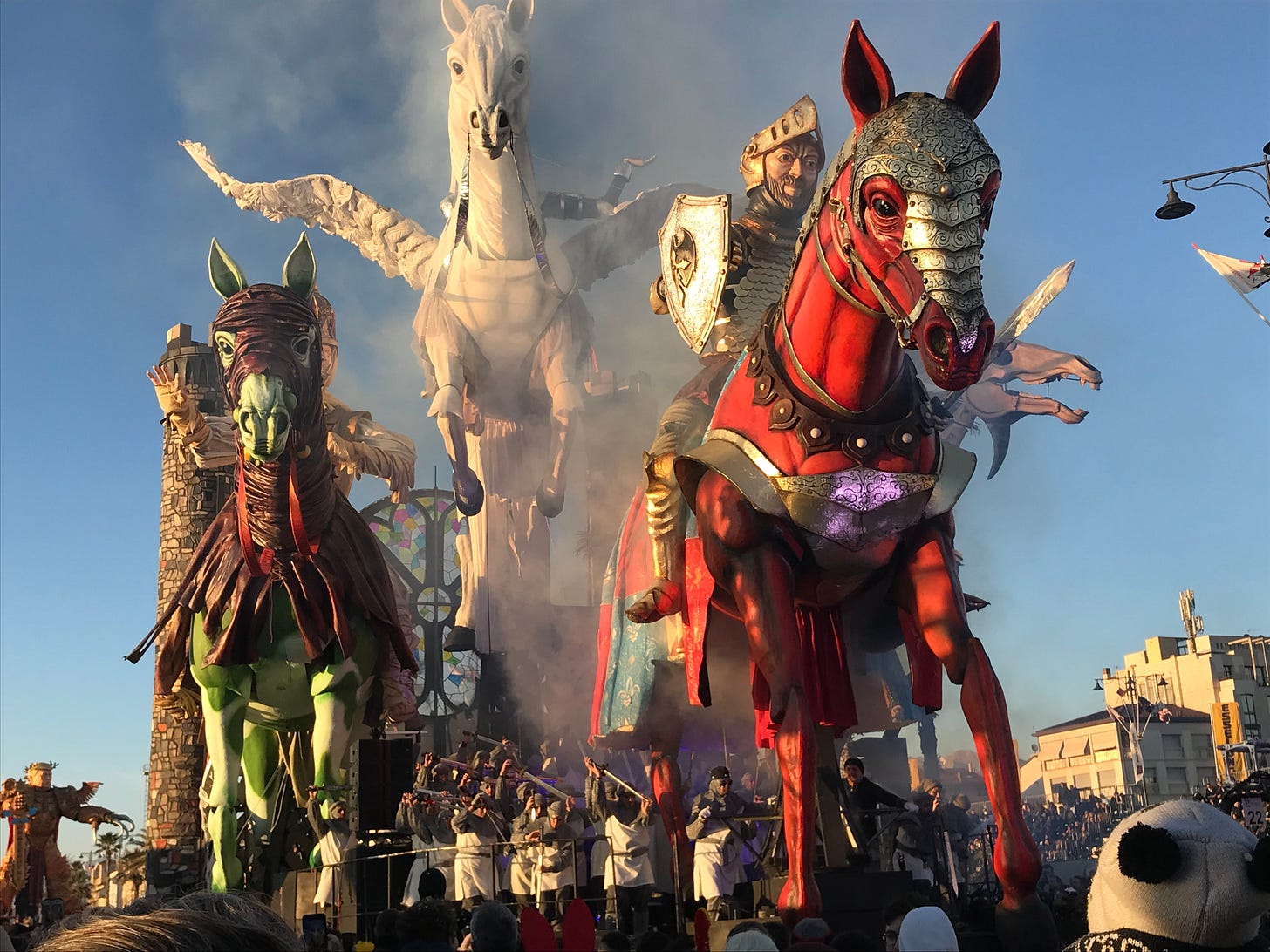

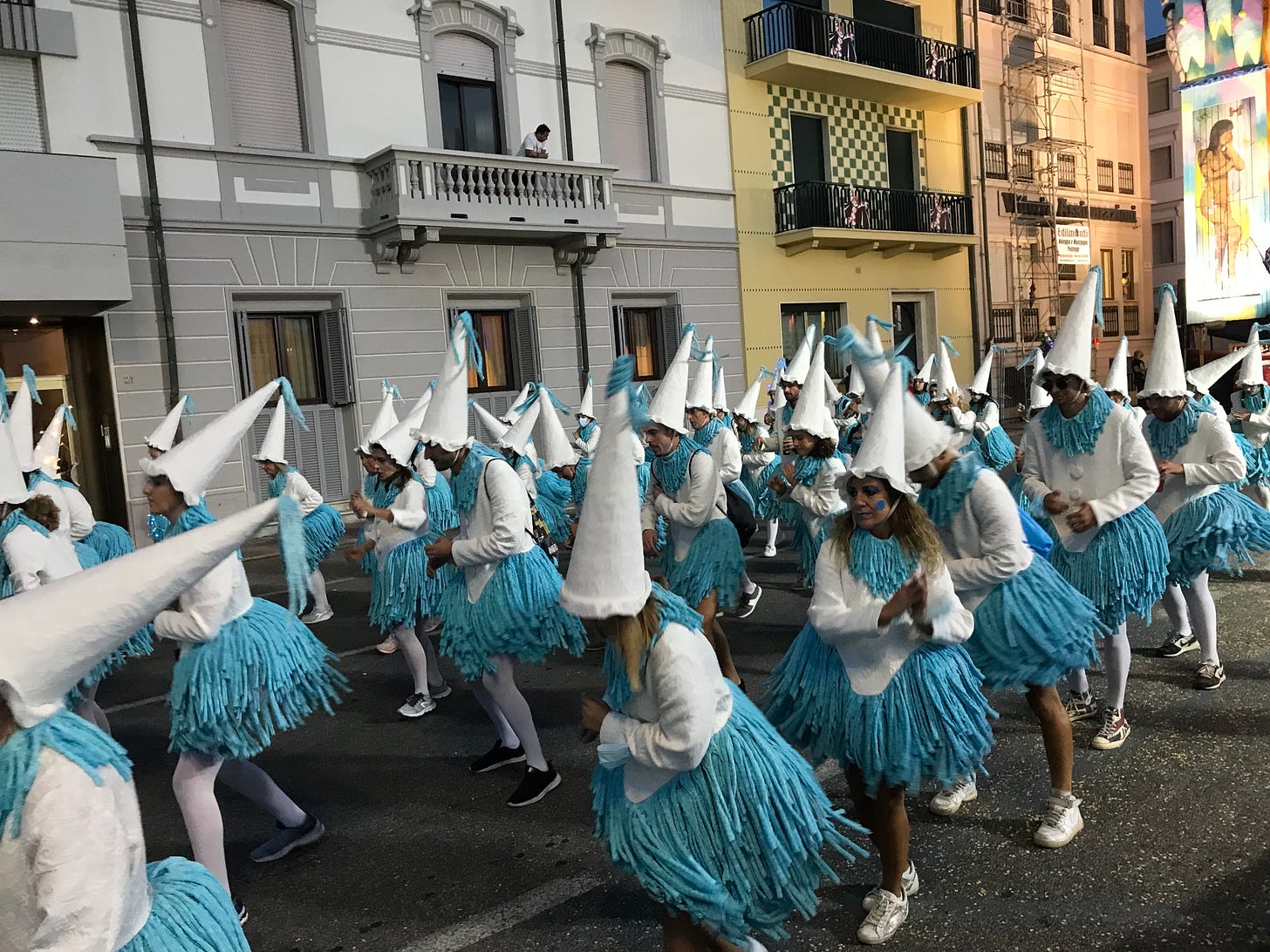
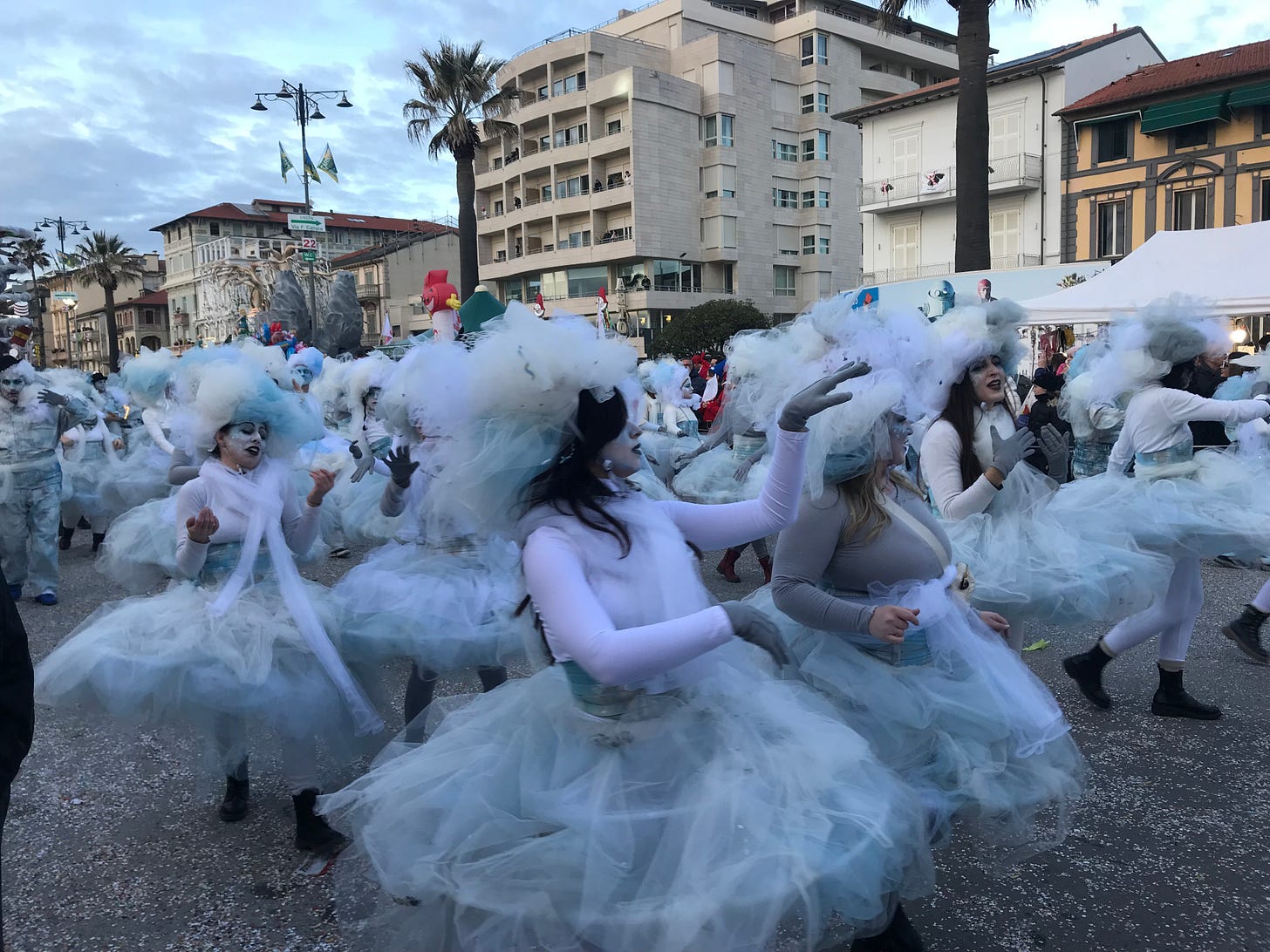
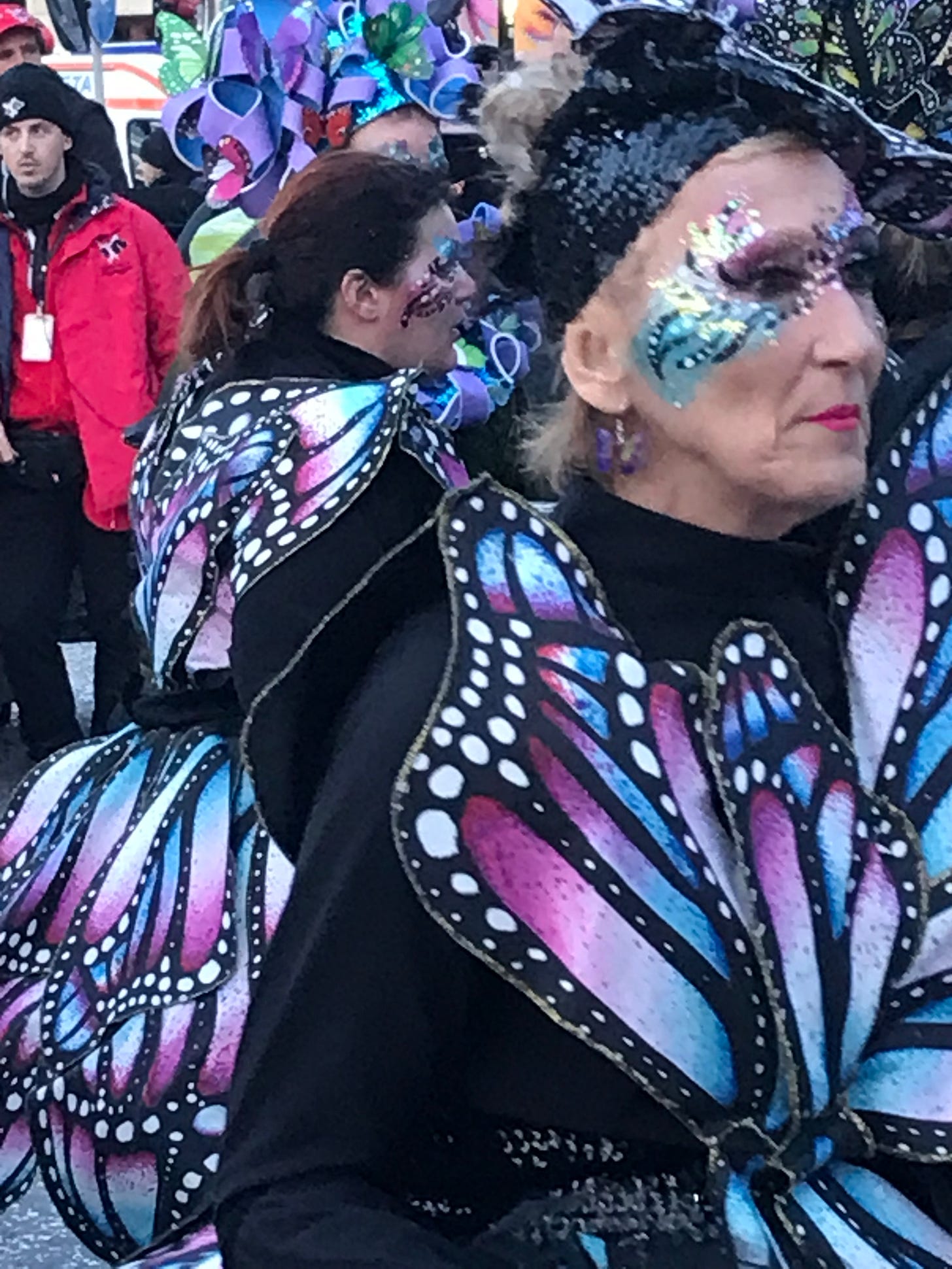

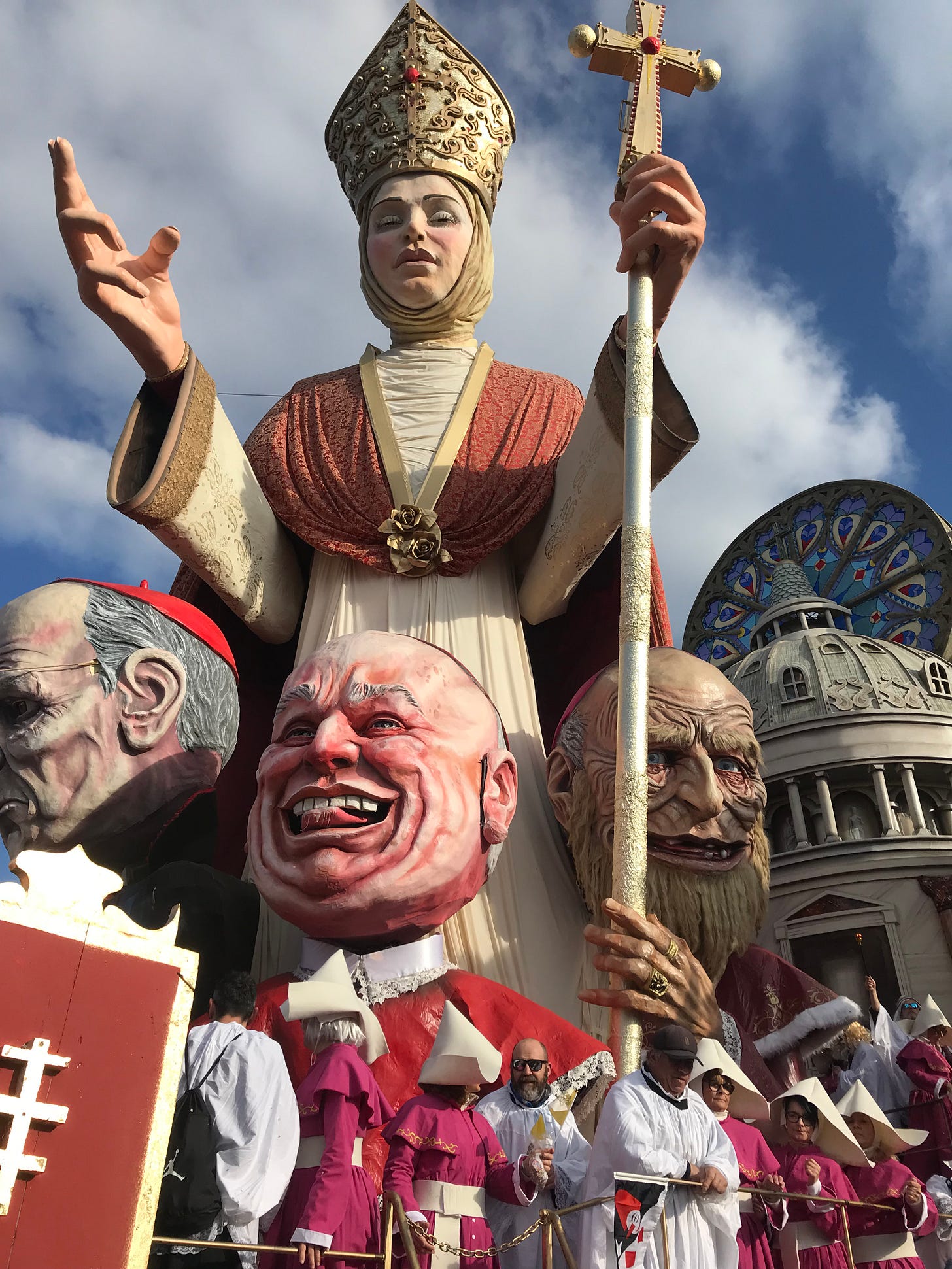
Via Regio is that near your Italian residence. Makes us homesick for Italy.
Thanks Phil. Nice pics. Did you take them? Good to see a lady pope, or at least a bishop!